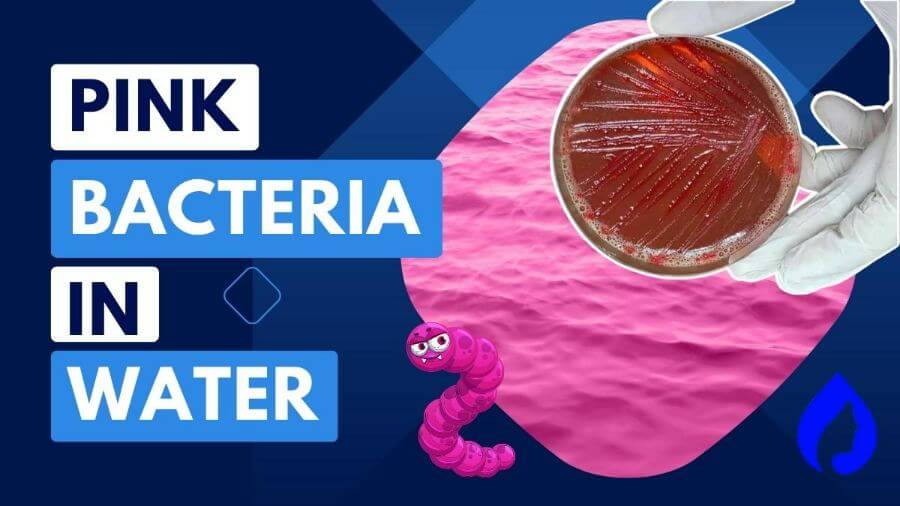
Saw a pink stuff growing in your bathroom? Beware, it’s bacteria, not mold!
Pink bacteria, or Serratia marcescens, is a group of facultatively anaerobic, rod-shaped bacteria naturally found in your environment- soil, air, and water.
It’s an opportunistic pathogen that’s mostly airborne, targets people with weak immune systems, and can cause UTIs.
The worst part? Your activated carbon filters give it an entry passage to tap water.
Continue reading for a detailed guide on pink bacteria in water and how to get rid of it!
🤔 What Causes Pink Bacteria In Water?
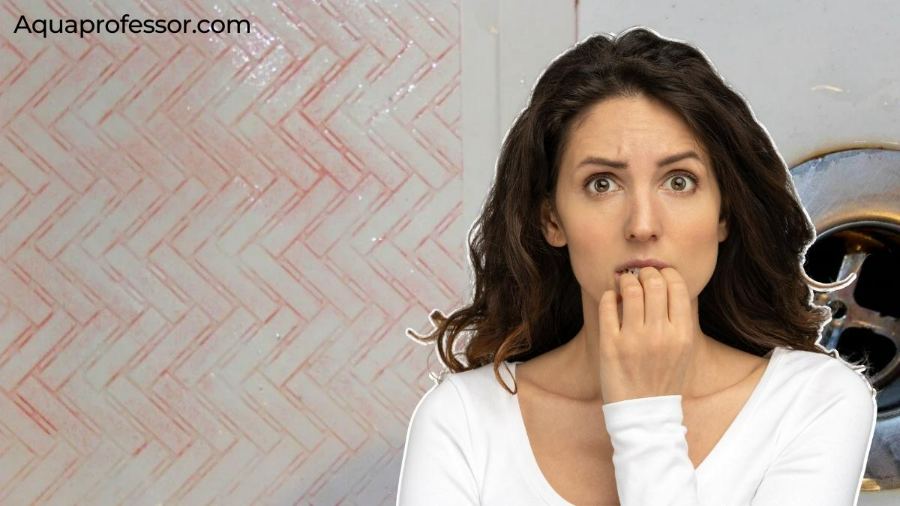
Pink bacteria, which appear like pink slime, are naturally found in soil and water. However, they have an airborne route, not waterborne.
This pink-pigmented bacteria usually thrives in moist environments, much like mold, but also in dust and phosphates.
They make their living by feeding the mineral deposits on our bathroom’s shower heads, tiles, toilet bowls, shower walls, toilet tank, and the fatty substances of soap scum and shampoos.
You’ll often find the slimy pink substance growing during or after house construction or remodelling when dust is stirred up or in regularly moist surfaces of your home.
People have found pink residue appearing when windows are left open in summer.
Here’s the part you were waiting for:
Pink bacteria gets an entry route in your tap water because of your activated carbon filters!
Chlorinated drinking water kills this pink pathogen, but your home water filtration system, which removes chlorine, allows it to thrive in your drinking water.
🦠 Are Pink Bacteria In Water Dangerous?

Yes, pink bacteria in water are dangerous as they can cause UTI and pneumonia, especially in hospital patients with weak immune systems.
It can lead to other diseases like respiratory infections, endocarditis, meningitis, and septicemia.
Besides, the pink-pigmented bacteria can also affect healthy people with wounds during showers and can grow on their contact lenses, causing eye infections.
There’s no EPA standard for pink bacteria as it’s an airborne pathogen and is not known to cause waterborne diseases.
But not everything is scary about this pathogen!
Interestingly, the bacteria produce a characteristic red pigment named prodigiosin, which can fight cancer, though detailed research is still going on over this matter.
Also Read: How To Maintain Your Peeing Health
👉 How To Get Rid Of Serratia Marcescens In Water?
🧼 Short-Term Solution
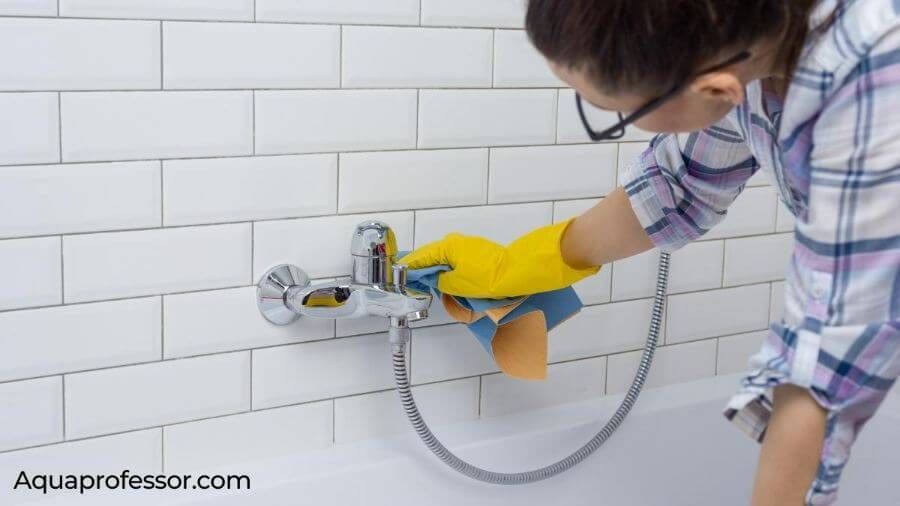
A quick solution to remove pink bacteria is to scrub the bacteria from your toilets and bathrooms. Here’s how you should do it:
Also Read: How RO Removes Bacteria From Water
🎚 Long-Term Solution
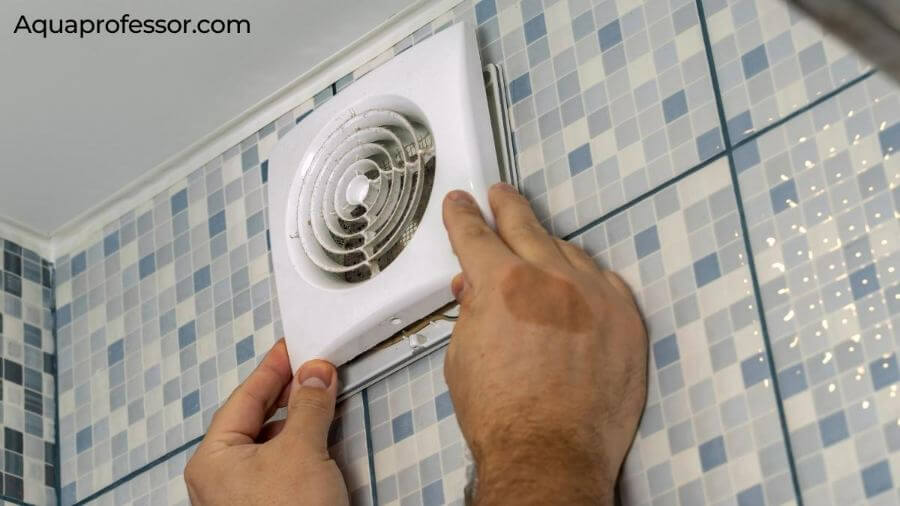
It’s impossible to eliminate Serratia completely; we can only manage it. Here’s how:
🔲 Ventilate Bathrooms
Routinely ventilate your bathrooms through mechanical ventilation for 30 minutes during and after your shower. It will reduce humidity in the bathroom and prevent pink bacteria from growing.
💧 Control Humidity
Here are some easy ways to control humidity in your house to keep Serratia at bay:
🌀 Avoid Chlorine Water Filters
Chlorine is a powerful agent for killing pink bacteria. Using chlorine filters like activated carbon filters provides a good environment for the bacteria to thrive. So, don’t bring chlorine filters in if you want pink bacteria out of your house.
Also Read: How Can I Tell If My Well Water Is Making Me Sick?
🥵 Take Precautions During Construction And In Summer
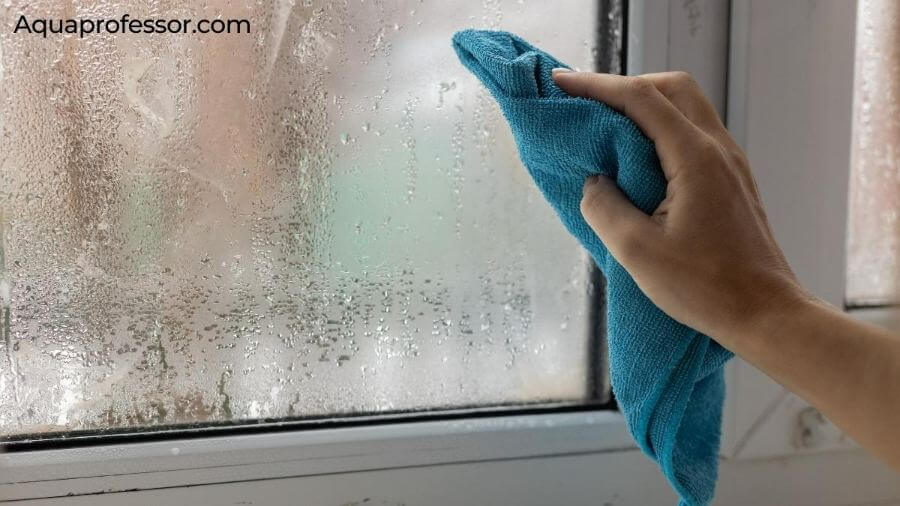
Summers call for humidity, which is an ideal environment for pink bacteria.
So, in the summer, you should take special precautions like wiping moisture-filled surfaces and keeping your home surfaces dust-free to prevent pink bacteria from growing.
Also, people at construction sites should be very careful. They must ensure minimum water leakage or dust to prevent bacterial growth. Besides, they should always wear masks daily before entering those sites.
🧼 Keep Your Washing Machine, Bathroom, Shower Curtains, Rugs, And Other Home Surfaces Clean
The pink slime occurs in dirty, moist, or dust-filled places. So, keeping your home and its various surfaces clean and dry will never allow the pink bacteria to come and stick to dirty surfaces.
Also Read: How To Remove Limescale From Water
🦠 Pink Bacteria In Water: FAQs
🥛 Can you drink water with Serratia marcescens?
No, you should never drink water that contains Serratia marcescens in it. It’s because this airborne bacteria is dangerous and can seriously affect your health through:
1. Urinary Tract infections
2. Pneumonia
3. Eye infections
4. Wound infections
5. Septicemia
6. Meningitis
Seniors or people with weak immune systems are most at risk.
🤔 How do I know if I have pink bacteria in the water?
You can detect that your water is affected by pink bacteria if you see the following:
1. Pink or red coatings within or surrounding your bathtub and toilet tank
2. Pink stains on your bathroom’s showers, wash basins, and tile grout
3. Pink stains or films within your toilet bowl or pet’s water bowl
4. Pink films upon your basement walls or dampened walls
If unsatisfied with the tell-tale signs, you may proceed with a pink bacteria water test using a home test kit or an accredited laboratory for water testing.
🧐 Will a water filter remove Serratia marcescens?
No, you cannot remove or kill Serratia marcescens by installing a water filter because this bacteria always grows in a moist environment and can get an ideal environment within your moist water filter.
The pink bacteria will affect your home water filtration systems and the pitchers, dispensers, and faucet filters, making them pink or red by releasing their pink or characteristic red pigment.
So, the best way to remove Serratia marcescens and its pink stains is to chlorinate your tap water which municipal authorities already do for city water to enhance the water quality. This is because Serratia bacteria cannot survive in chlorinated drinking water.
🎚 How do I get rid of pink mold in my pipes?
You can get rid of Serratia marcescens from your pipes and the pink stains produced by them by:
1. Fixing your water-leaked pipes
2. Applying store-bought or DIY cleaning supplies on the affected areas
3. Spraying water and vinegar solution mixture (1:1) over the pipes’ surfaces and scrubbing them with a coarse scrubbing brush or sponge
4. Spraying a chlorine bleach disinfectant over the pipes and scrubbing and rinsing them after thirty minutes.
🤒 What are the symptoms of Serratia marcescens infection?
The common symptoms of Serratia sepsis include fever, respiratory discomfort, chills, and shocks, although it can vary based on the diseases it causes like:
1. UTI: Many patients (30 – 50 %) don’t feel any symptoms of UTIs. The others experience frequent urination, fever, pain while or after urinating, difficulty in urination, and release of WBCs (White Blood Cells) along with urine.
2. Respiratory infection: Patients experience pneumonia, fever, productive cough, chest pain, hypotension, chills, and shortness of breath.
3. Meningitis: Patients have the symptoms of headache, fever, vomiting, and stupor. They may also go into a coma.
4. Ear infections: Symptoms include headaches and discharge from the ears. It may also result in hearing loss.
Adarsh is a Health & Nutrition Sciences graduate with expertise in environmental health. He is associated with ventures like Glacier Fresh Filter and Simpure Filter Systems. Through Aqua Professor, he intends to provide helpful information to every home to help them make smarter decisions.
